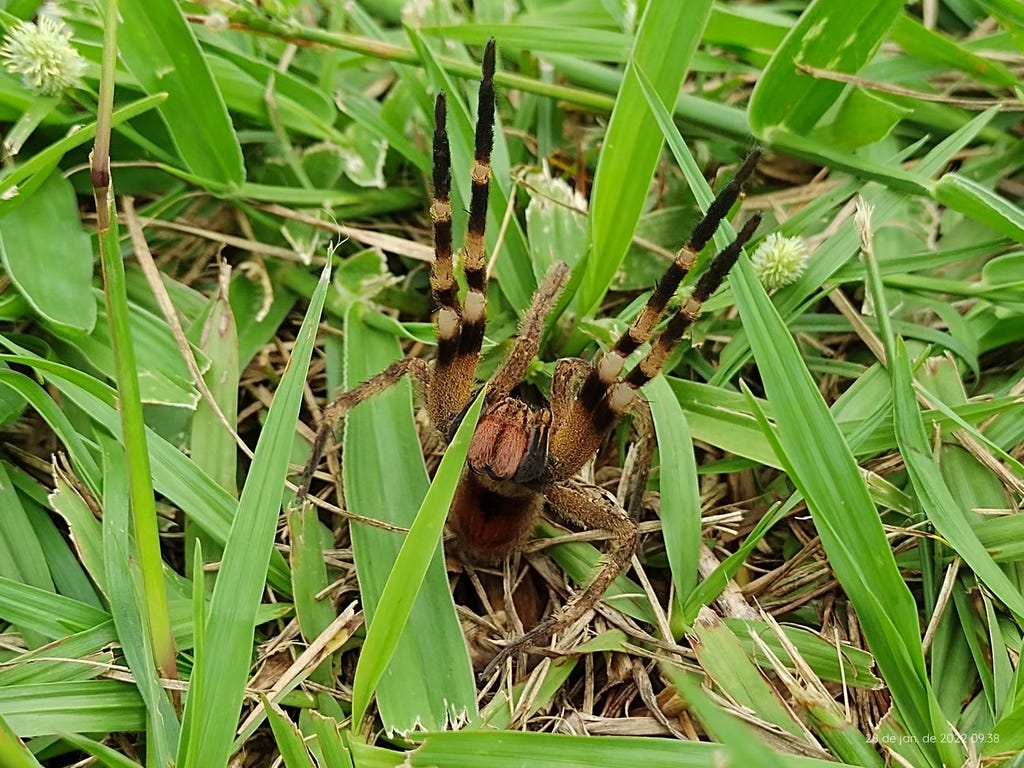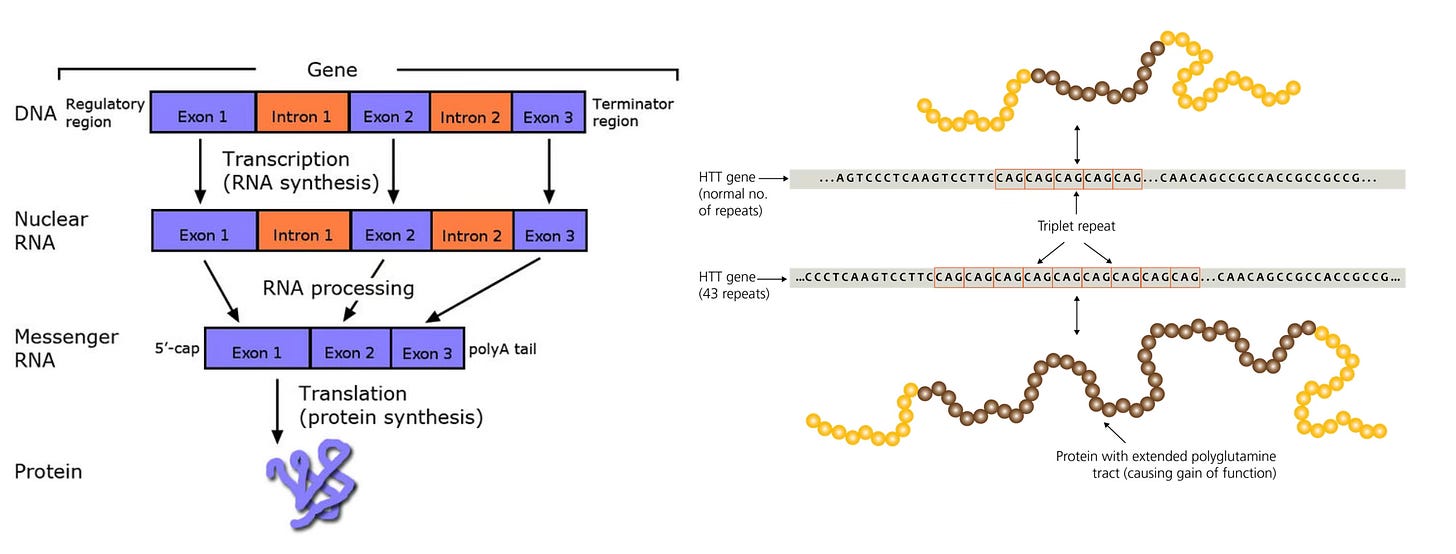How Rapists and Domestic Cats Differ, And Spiders Causing Unwanted Erections
... and the rest of biology you recently missed, explained to everyone that's curious about life.
Nature and biology is best explored and appreciated outdoors. Go outside, hug a tree, and talk dirty to some lonely insect or something.
The second best thing is probably my newsletters.
The Bio Brief injects recent research, knowledge and a weekly reminder to give a fuck about life and nature. It’s about the important stuff, beautiful stuff, fun stuff, weird stuff, and the other stuff.
I write these because I think it matters that you give a shit.
This week, you can expect to learn about:
Spiders that wander around causing erections and a promising peptide for impotence
Community efforts that focus on biodiversity and can help you socialise tante Trude
Something in cats and human rapists that help you understand how genes work better
… And probably some more.
You’ve got to know it to love it. So please read on.
The Word for Something That I Have Previously Used Other Words For
This week I discovered that the thing I have always just called animals pretending to be dead to avoid getting murdered, has its own fancy name:
Thanatosis.
It comes from Thanatos, the Greek god of death. It describes the evolutionary method acting that possums, snakes, frogs, and even some insects do of playing dead. Some species take it so far they literally poop themselves for that extra carcass realism.
It should probably just be called animals pretending to be dead to avoid getting murdered.
But it is a cool word for something cool, nonetheless.

Spider Venom Erections
Every kid dreams about a magic spider bite and the amazing abilities to be gained from it. One ability I imagine only the wickedest of kids wish for however, is the super power of prolonged erections.
But as I recently learned, there actually exists one such spider that has exactly this to offer.
The Brazilian wandering spider (Phoneutria nigriventer) is not only recognized as one deadly ass spider, but also for its side effect of causing massive erections in humans.
I mean, just the fact that you apply the name of wandering spider to this guy is creepy as hell.
But this is actually one of the side effect of envenomation. And It is not caused by a fetish of being bitten by spiders or anything. It's a long-lasting, often painful erection unrelated to sexual arousal, what medically is termed a priapism.
And obviously this is something biologist are interested in and have actually investigated in detail. Researchers have isolated a specific peptide from the venom called Tx2-6, that is believed to be the cause or part of the cause.
As you know, I aspire to be a serious biology textbook author. Thus, I will explain some biology to fill in potential knowledge gaps for you here. So, if you have ever looked at your own erection or that of others and wondered how the fuck that happens? Don’t worry — here is how it goes:
Either you get aroused by something or you are something that arouses someone. Regardless, some sexual stimulation is required usually, and that causes a release of nitric oxide (NO) into the penile tissue of the bonered. This leads to an increase in a molecule called cGMP that causes the relaxation of smooth muscles in the dick. More relaxed muscles causes more blood to flow inn, causing the swelling of the penis. If you are familiar with Viagra (sildenafil), it works by inhibiting something (PDE5) that degrades cGMP, thus prolonging the erection.

Back to spider peptides:
This Tx2-6 peptide bypasses the need for the sexual stimulation part, by boosting NO in the penile tissue directly. This is likely done by activating the enzyme nitric oxide synthase (a protein that makes NO from the amino acid L-arginine). So it kinda makes the brain to boner connection irrelevant.
In rats for instance, it can cause significant erections even when they have nerve damage that otherwise would make them impotent.
Why should you care?
First, because stay the fuck away from this spider, obviously.
Secondly, Marvel needs to redo the multiverse thing. It clearly lacks one special Spiderman character.
But also, maybe this is useful somehow?
Not only does it bring some humanity to back to the animals we sacrifice to do science, by helping those with damaged horniness nerves. Think of it as a potential mechanism and compound to be explored for helping humans that struggle to get their dick hard. This is in fact considered a potential therapeutic for impotence.
Remember: society might struggle with too many, but some people truly suffer from too few.
The BioBlitz
Something I Learned this week, that I didn’t know was a thing: something called a BioBlitz.
This is a concentrated effort to notice life and nature at the community level. For a day or just a few hours, scientists, naturalists, and anyone who wants to join come together to find and record as many living species as possible. These events often happen near cities, in parks or reserves.
Amazing efforts to encourage public interest in biodiversity.
Google it. See if there are any one of these near you. Plug my Substack to everyone you meet. Thank you.

Genetics That Go Purrrah in Friendly Cats and Terrible Humans
A new study investigated the genetic basis of purring in cats.
Specifically it looked into genetic variations in the androgen receptor (AR) gene, and how that affects various behavioral traits in cats. The androgen receptor gene is a gene that codes for a protein (the androgen receptor protein), that responds to androgens (such as testosterone), and in turn activate other genes and systems that influences development, physiology, behavior etc.
Of particular interest here was a specific region of the gene, a region in exon 1 of the AR gene.
An exon is a region of a gene that actually contains the specific recipe for amino acids that can be used to make proteins (for example a receptor). The amino acid recipe is based on the sequence of every three nucleotide in the DNA (a codon), made up of a combination of the 4 total nucleotides there (represented descriptively by the letters A, T, C and G). Multiple codons from the exons of a gene yields multiple amino acids, thus the building blocks of the desired protein.
This particular region of the AR gene contains something that is called a trinucleotide repeat sequence, meaning you have 3 nucleotides/a codon that is repeated multiple times in sequence. This specific repeat is a repeat of the three nucleotides or the codon CAG. This region is polymorphic, meaning it varies how many CAG codons one individual has in exon 1 of this gene. This might also vary between species and different animal groups.

In this study they found that cats (represented by the 280 Japanese spayed/neutered mixed-breed cats that participated), had between 15 to 22 such CAG repeats in this region on exon 1.
And this is of importance, because CAG is one of the ways DNA codes for the amino acid glutamine.
When glutamine helps build the protein (in this case the AR protein, the actual receptor), that protein will be built differently depending on how many glutamines it is built from. And in the case of the androgen receptor the number of glutamines works like a regulator nob, influencing things like how strongly it responds to testosterone.
So they divided the cats into two groups:
Those with short repeats: < 18
Those with long repeats: > 19
Based on results from one of those cat specific questionnaires that cat scientist likes so much (so subjective owner bias present be aware), they observed the following tendencies in the two groups:
The short-repeat cats purred more.
Male short-repeat cats vocalised more with direct calls and such.
Female short-repeat cats showed more stranger directed aggression.
All these traits reflect a higher drive to engage with their environment, or to solicit attention or resources. Something common for how androgen signalling operates in other species as well (for instance regulating birdsong).
Repeats and their polymorphic variation are associated with many traits in animals. This includes traits like aggression in dogs, how easily spooked camels get, and the personality in elephants. In humans, shorter CAG repeats in the AR gene have been linked to the very bad behaviors of rapists and murderers.
Kinda lame that this is what humans get, while cats get cosy purring.

They also did a genetic comparison with available data from wild cats, such as tigers and cheetahs. Interestingly, they found that the longest repeats (20-22) were only present in domestic cats, not their wild relatives. This they suggest to be a result from selection through the domestication process, possibly as a side effect of reduced need for vocal signalling. It’s a perfect demonstration of how spoiling our pets makes them lazy little fuckers. Evolutionary speaking they have stopped giving a fuck about working for our affection.
Still tho, much better than going the other way turning into a homicidal ape.
Do I, or should you, really care about purring in cats? I don’t think so.
Do I, or should you, really care about knowing some basic molecular biology that can possibly explain weird animal behavior and human conditions? Yes, Sir.
PS: this questionnaire they used is called Feline Behavioral Assessment and Research Questionnaire, or Fe-BARQ. I mean, BARQ? What the fuck? Keeping the name used on the rival animal (C-BARQ), any cat people offended by this?
Thank you for your interest in Biology and Nature!
Remember: Nature and biology is best explored and appreciated outdoors, not through a fucking computer. Go outside, hug a tree, and talk dirty to some lonely insect or something.
Then you have this substack, which is established as the second best thing:
If you learned something — consider leaving a comment to let me know!
If you really give a shit, and you want those weekly reminders about stuff going on in nature and fascinating biological research — consider subscribing to Recent Biology.
If you are intrigued by penis duels, selfish genes or the neurobiology of love — check out my recent exploration of these topics.






